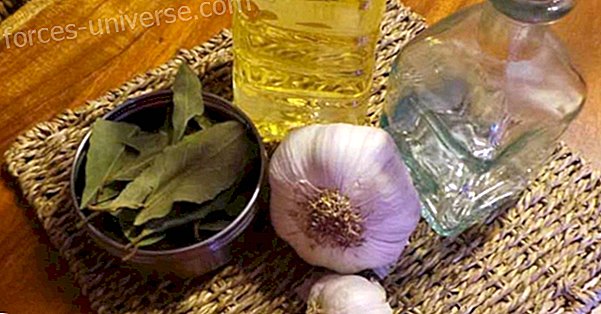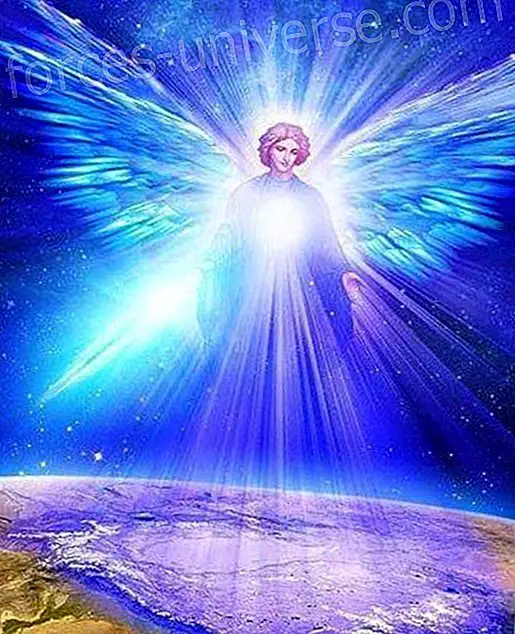
Being a good analyst chemist means having a really off-the-shelf talent, a clear understanding is required in the enormous advances that have been produced in chemistry as a result of new techniques. As if it were a caster, a good chemist is one who has the ability to perform wonders.
I wanted to title this article in parallel to The Tao of Physics by Fritjof Capra, in his systemic interpretation of modern science, thus forming a trilogy with The Tao of Biology or The Tao of the Psyche. In fact, the book of mutations is conceived from these three points of view: the TAO of Heaven establishes relations between the dark and the luminous, the TAO of the Earth analyzes the soft and the firm, the TAO of man interprets love and Justice. Meaning is what sets the game of these opposing forces in motion and sustains it. The SENSE of the world is indeed goodness and wisdom, but in its most intimate essence it is also beyond goodness and wisdom.
From alchemy to chemistry.

The true essence of the hermetic sciences was hidden in the intimacy of the symbols of alchemy, astrology and cabal. The sense of the earth is found in alchemy. When the true alchemist spoke of the search for gold he spoke of that precious metal in the soul of man, and when he spoke of the elixir of life, he did so was the search for eternal life and the ways for immortality In these cases the joya corresponds to the Kingdom of Heaven of Christianity and the Nirvana of Buddhism.
The work of the alchemists was based on unlocking the secret of the kingdoms of nature, so that each kingdom had a goal: to the mineral kingdom the transmutation of vulgar metals into gold or silver, to the vegetable kingdom, the transformation, the secret of the sacred perfume; to the animal kingdom the transfusion, the creation of a panacea, a remedy that would supposedly cure all diseases and prolong life indefinitely. All of them were the result of the same operations. What changed was the raw material, the duration of the processes and the vigilance and strength of the fire.
KINGDOM | ELEMENT | PROCESS | SECRET | OUTCOME |
Mineral | Earth Earth | Condensation | Transmutation | Radiation |
Vegetable | Wood-Air | Conformation | Transformation | Magnetization |
Animal | Water water | Concretization | Transfusion | Experimentation |
Human | Fire Fire | Adaptation | Translation | Manifestation |
Almico | Metal-ether. | Externalization | Transfiguration | Realization |
Illumination was only achieved after arduous years of rigorous study and experimentation. Once the apprentice managed to control the fire, the time of the processes and the processes themselves in the plant kingdom, he was ready to access the major secrets, that is, the same works in the animal and mineral kingdom. They argued that the potency of the remedies was proportional to each nature, hence the term philosopher's stone, is related to the mineral kingdom. The alchemical dream has come true everyday, today the chemistry using the most advanced systems has reached the transmutation of matter. In reality, Alchemy studies metaphysical metallurgy, that is, the operations that nature performs in living beings. So what we used to call secret, today we call it technique.
Let's start by clarifying the nature of the knowledge that we are going to compare and the language in which that knowledge has been expressed. In chemistry the scientific method is used and experimentation as a technique. In hermeticism the method is alchemy and technique, interpretation.
Chemistry and its processes.

In 1828 Friedrich Wöhler synthesized urea from inorganic materials and showed that there is no difference between inanimate substances and those of living matter, however, the branch of chemistry that deals with carbon compounds is still called organic chemistry. (Within a decade we will have been talking about the same for two hundred years).
By the mid-50s (1955) there was a general consensus that the origin of the similarities between natural sciences was the concern about the behavior of systems, before that, physics focused on the concepts of mass and energy, the chemistry in the elements of the periodic table and the biology in the cell, but with the systems approach it began to speak in terms of open and closed systems, of the organic and the mechanical, of the parts and the whole.
Organic chemistry is beginning to pay off the great debt it has with physics. Materials science is based today on molecular structure. The great advances in physics, electronics and engineering would be impossible without semiconductors, transistors and new magnetic materials, whose operation is based on chemical processes.
All simple substances, in the right conditions, can be in a solid, liquid or gaseous state, these are the physical states of matter, but within them the transition states of chemistry occur. The metal foundry encompasses the three states of matter. All molecules, basic components of matter, of a substance exert a given force on each other, the intermolecular force has a component of attraction and another of repulsion.
The electrical attraction caused by the redistribution of electrons causes adhesion between atoms to form molecules. After the required physical processes, a new type of process is then initiated: the chemical processes. These result in increasingly complex molecules, and, consequently, of larger size.
These chemical processes evolved; the molecules that formed were of an increasing size and several of them were integrated to form increasingly complex entities. Atoms and molecules of methane, hydrogen, ammonia and water vapor became a kind of "broth" on which the great electrical discharges of the storms that formed in the atmosphere of the primitive earth occurred and thus gave rise to what which today we call organic molecules. Indeed, these discharges provided the energy needed to form those large molecules that constitute what could be called prebiological molecular units. What could have happened afterwards so that the first molecules capable of self-reproduction (which is a property that all living beings seem to have) emerged has been explained since autopoiesis. The three key criteria for biological processes were thus counted: structure, pattern and process.
Atomic stability is the key to nuclear physics and much of chemistry. For an atomic nucleus to remain stable, there must be some kind of balance between its internal forces (electrostatics) and the strong nuclear force. The spontaneous process that occurs when an unstable atomic nucleus tries to become more stable is called radioactivity, and it was the one that revealed the secret of transmutation.
The elementary particles.

For the alchemist the five elements are earth, water, fire, air and ether, which are more related to the state of matter than to the chemical elements of modern science.
Fire represents a main and essential role in alchemy. The alchemists would be called the lords of fire, it is through fire that the transition of matter from one state to another takes place. The ether was a hypothetical extremely light substance that was believed to occupy the entire space as a fluid. Today it could be related to both plasma, in its substance aspect, and with holography, in its aspect of light.
A vital advance that allowed chemistry to become the most important science was the demonstration of the atomic nature of matter. The elements are in an atomic state, that is, substances whose parts (protons and electrons) are held together by a force superior to all that have been applied so far.
Chemistry deals with the way atoms interact. It deals specifically with the study of millions of compounds that can be formed by combining atoms of different elements together and giving rise to the structures we call molecules. Today we know that atoms form molecules, compound molecules, compounds, cells; the cells the tissues; the tissues the organs; The bodies the bodies.
The theory of the five elements in China is a way of classifying natural phenomena, and their interrelationships, taking into account two cycles: According to the generation cycle (also called the creation cycle): wood feeds fire, fire, with its ashes, it produces earth, the earth harbors the minerals, the minerals feed the water, the water gives life to the wood.
According to the cycle of domination (also called the star of destruction): wood is nourished from the earth, the earth retains water, water extinguishes fire, fire melts metal, metal cuts wood.
The eight states of change are: Thunder works the movement, the Wind works the dissolution; the rain works the dampening, the sun works the warming; The Settlement works the arrest, The Serene works the rejoicing, the Creative works the domain, the Receptive works the preservation.
In our western culture we have not had very much in mind the metal as an element, or the mineral as a kingdom, and it is thanks to him that we know about magnetism, we use silicon wafers (chips) and we could understand the concept of ether. The 92 known elements can be divided into metals and nonmetals, with metals being good conductors of heat. Elements 92 to 104 are all radioactive. In 1898 the radio was discovered and in 1910 the metal was isolated.
The yin-yang dualities and the chemical reactions

When two substances are mixed, they can react giving rise to the chemical compounds. The simplest chemical compounds are composed of crystals.
In alchemy, Heaven and Earth determine the direction. The mountain and the lake maintain the union of their forces, exert a joint action. Thunder and wind excite each other, they do not disturb each other. Water and fire do not fight each other, they complement each other.
In chemistry, water and fire are represented by electricity. When an electric current passes through the water, its energy breaks the water molecules into atoms of hydrogen and oxygen. Since the molecules of an object are affected by thermal energy, it is not surprising that the gain or loss of heat has various pronounced effects. The most notable is the possibility of a change of state: melting of a solid, boiling and evaporation of a liquid.
The relationship between physical processes and chemical processes was provided by thermodynamics. A consequence of the first law of thermodynamics states that the total amount of energy in a closed system is constant. Another important conception of thermodynamics is that of entropy, which we can define as the degree of disorder of a system. Organic decomposition and inorganic oxidation are two examples of entropy. But in the living world, order and disorder are always created simultaneously: in the organic there is no entropy.
Alloys are produced by melting together a metal and one or more other substances. The solutions are obtained when we combine a solute with a solvent. A solution is a homogeneous molecular or ionic mixture of two or more pure substances that do not react with each other, whose components are in varying proportions. It can also be defined as a homogeneous mixture consisting of a solvent and one or more solutes. The alkalinity or basicity of water can be defined as a measure of its ability to neutralize acids. The pH is a measure of acidity or alkalinity of a solution. The pH indicates the concentration of hydrogen ions [H] + present in certain solutions.
A reaction only occurs spontaneously when the products resulting from it are less energetic than the starting products (reagents), that is, when they have greater chemical stability. The reactions can then be classified as inorganic and organic.
Inorganic: - Acid-base, Combustion, Dissolution, Oxidation, Precipitation, Redox, Reduction
Organic: Substitution, Elimination, Addition, Reordering, Condensation, Decomposition
The interpretations of the mind.

In the last 80 years, chemistry has become the language of biological sciences and the basis of many of the most important theories and experimental methods. Modern chemistry comes from a fantastic kitchen of vulgar charlatans, but true philosophers, lovers or friends of wisdom, carefully separated the fine from the ordinary, with caution and foresight, as requested by the Emerald Table of Hermes Trismegisto; that is to say, they banished the meaning that corresponded to the dead letter and stayed only with the intimate spirit of the doctrine.
Today, science, as a process of inquiry, uses a procedure to answer questions, solve problems and develop more effective procedures for those first two phases. This led to the definition of scientific competencies as the know-how evidenced by the chemist to establish conditions, make hypotheses, interpret situations and make decisions. Some of the achievements to be achieved by the chemistry trainee are:
- Verify the effect of pressure and temperature on chemical changes.
- Performs quantitative calculations on chemical changes.
- Explain the relationships between matter and energy in food chains.
- Explain the transformation of mechanical energy into thermal energy.
- Explain the functioning of neurons from chemical and electrical models.
- It establishes relationships between mutation, natural selection and inheritance.
The type of questions the chemist faces are related to the processes or techniques involved. In the long term we will have to answer a series of awkward questions resulting from the convergence between nanotechnology, biotechnology, computer technology and cognitive science. For example, if a new nanoparticle is inserted into a cell, is this a biotechnological or nanotechnological act? If this molecule has a memory that can record what happens inside the cell, is it about nanotechnology or computing? If artificial molecules that fulfill logical and memory functions can be designed, it may be possible to introduce a computer into a cell.
The changes in nature.

The development of human intelligence consists in expanding their ability to find analogies. Metaphors are the scaffolding that is used to ascend towards abstraction, and build possible worlds. The virtue of scientific models is that they allow us to keep a huge amount of information in mind while paying attention to a minimum of detail.
Changes are represented by sequences of drawings, words or numbers called sequences. The fundamental thought of the Book of Changes is the idea of mutation. The look of the one who has recognized the mutation, no longer stops on the singular things that happen with the flow of the current but instead goes towards the eternal immutable law that acts in every mutation, that law is the meaning, The Tao. The second fundamental thought is his doctrine about ideas: everything that occurs in the visible is the effect of an "image", of an idea, located in the invisible. Such ideas are accessible, thanks to the intuition of sages and saints who are in contact with the supreme spheres. The third component of the book is the sentences, which indicate whether an action brings happiness or misfortune.
Let's look at the sign 59, the dissolution, is made up of the wind and water trigrams. The wind that plans on the surface of the waters disperses and dissolves them in foam and mist. In chemistry they are known as colloids, unusual states of matter in which the dispersion medium is a gas and the phase disperses a liquid.
Transmutation is the power to produce changes by applying heat, it consists in passing from one state of matter to another by the action of fire. The transmutation concerns the life of the atom and was hidden in the knowledge of the laws that govern radioactivity. Irradiation is transmutation in the process of realization. Radioactivity is light vibrating through matter.
We can list the process as follows:
- The substance is subjected to external heat.
- The heat, acting on the form, produces exudation and the humidity factor ensues.
- Moisture and heat develop their action in unison.
- The internal heat of the atom increases.
- The heat of the atom increases rapidly and exceeds the external heat of its environment.
- The atom radiates,
- Negative electrons or entities seek a new center.
- The central life escapes to merge with its opposite pole, becoming a negative pole that seeks the positive.
A mutation is any change in the nucleotide sequence of DNA. When such a mutation affects a single gene, it is called a genomic mutation. When it is the structure of one or more chromosomes that is affected, chromosomal mutation. And when one or several mutations cause alterations throughout the genome, they are called genomic mutations.
In the 1870s, chemistry as a science was in the same position as biology today. I had just acquired a coherent theoretical framework, the periodic table. The equivalent for biology is genetics, since the genome of a living being is, in a lax sense, its own periodic table of possibilities. The chemical industry in the aforementioned decade was also similar to current biotechnology. This new technology could create new possible medicines and new industrial procedures based on genetic engineering, (what we saw at the beginning as the destruction cycle) dedicated to the control and DNA transfer from one organism to another, which allows the correction of genetic defects and the creation of new strains (microorganisms), varieties (plants) and breeds (animals) for obtaining More efficient of your products. It includes a set of biotechnological techniques, among which stand out the genomics, which uses knowledge derived from different sciences such as molecular biology, biochemistry, computer science, statistics, mathematics, physics, etc; However, what you can explain about a protein has a limit. It must be supported by other
It could be said that the objective of research in artificial intelligence is precisely to create a life from scratch, However, because the specific objective of alchemy is human transmutation, more More than the creation of life from scratch, genetic research, especially the help, will be closer to it.
In the Fullmetal Alchimist children's series, they say what are the ingredients to form an adult human being: 35 liters of water, 20 kg of carbon, 4 liters of ammonia, 1.5 kg of lime, 800 gr of phosphorus, 250 grams of salt, 100 grams of nitrate, 80 grams of sulfur, 7.5 grams of fluorine, 5 grams of iron, 3 grams of silicon and 15 more elements. Today we know that the protoplasm is made up of water, electrolytes, proteins, enzymes, carbohydrates, lipids. The secret to unraveling today is that of the transfiguration (one of the five luminous mysteries) that technology has made possible with the projection of holograms. The technology of the televisions has been approaching this, first the plasma screens, then those of LCD liquid crystal, then the LED screens, it only remains for the human being to achieve high definition, maintaining a high resolution in your digital being.
The changes have been related to the relationship between water and fire, in the Atlantean era the sacred word was TAU, which was misused and led to civilization to disaster. He was followed by the word AUM which can also be misused and lead civilization towards fire. I will follow the word of the soul, which I consider is LIGHT: light vibrating through matter. Biologists have studied the triple nature of the substance aspect, psychologists study the triple nature of the soul aspect and thus reveal the secret of consciousness.
AUTHOR'S NOTE
The version used in the Book of Mutations is that of the Chinese in German with comments by Richard Wilhelm.






